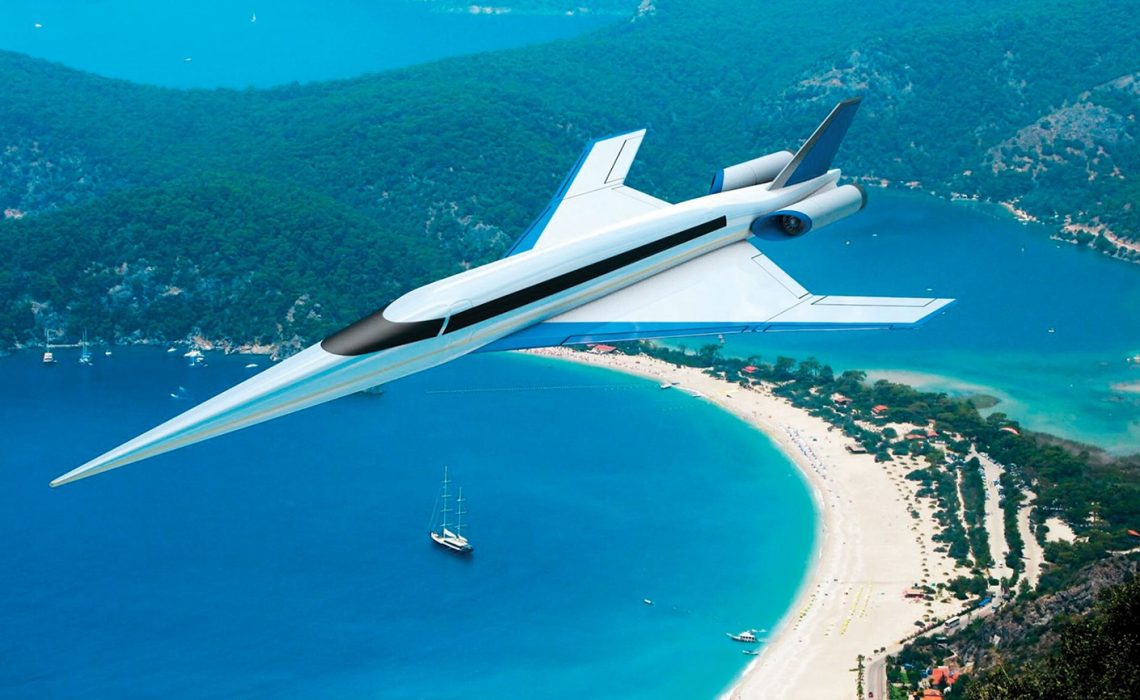
You might also like:
Measures included in both the House and Senate FAA reauthorization bills call on regulators to get to work promptly on opening overland flights to supersonic jets.
That’s good news for the three companies that are currently developing next-generation supersonic aircraft. But NASA, which is in the midst of what is expected to be a seven- to eight-year project designed to gather data on acceptable noise levels for sonic booms over urban areas, says the legislation might be jumping the gun.
“I think it will be very difficult to do what they’re proposing,” said John Carter, manager of NASA’s low-boom flight demonstration project at the Armstrong Flight Research Center.
The U.S. currently prohibits civilian supersonic flights over land due to the disturbances that booms could cause to neighborhoods in their flight paths. The noise of a boom is especially onerous because it’s not a one-time blast that occurs when an aircraft exceeds the speed of sound (767 mph), as some misunderstand it to be. Rather, the boom trails an aircraft along its entire route as long as it is flying at supersonic speed.
The Senate measure calls on the FAA to review supersonic regulations within six months of passage and then report to Congress with recommended changes that would allow for overland supersonic flight.
The House measure would give the FAA a year to report back to Congress.
Both versions of the FAA reauthorization bill have passed out of committees, but neither has made it to the floor of its respective chamber.
Congress must either pass the reauthorization or a short-term extension of the existing authorization by Sept. 30 to keep the agency funded. However, with legislators in recess until after Labor Day, and with budget discussions set to begin when they return, a short-term extension is thought to be a more likely immediate outcome.
The proposed measures come as Denver-based Boom Technology is targeting 2023 for the launch of the first commercial supersonic aircraft since British Airways and Air France took the Concorde out of service in 2003. Two other companies, Aerion Corp. and Spike Aerospace, are engineering supersonic business jets.
Aerion is working with the assistance of Airbus.

Spike is targeting a 2019 test flight for its 18-passenger S-512 business jet, company president Vik Kachoria said. Aerion anticipates a first test flight for its eight- to 11-seat AS2 in 2022.
Boom, which says it has already taken 76 orders for its planned 42- to 50-seat commercial aircraft from the Virgin Group and four other undisclosed global airlines, believes the plane will be economically viable even if it can only cover transoceanic routes. But if overland U.S. travel were to be allowed, it would be a boon, said Eli Dourado, Boom’s head of global policy.
“We view our ultimate customers as the traveling public, and we want to be able to offer them two-and-a-half-hour flights from New York to L.A.,” he said.
Kachoria said that if progress were to begin now on more liberal supersonic regulations, it would have a major impact on his business. Spike, unlike Boom and Aerion, is building its jet as a low-boom aircraft with the intention of operating over land, both in the U.S. and elsewhere.
“If the investors see it will no longer be restricted by 2025, they’ll say, ‘Hey!'” Kachoria said.
He and Dourado both expect development of the regulations to take a decade, perhaps even a bit longer.
“It would be a missed opportunity if we don’t do this now,” Dourado said.
Fueling the optimism that overland flying will be viable during the second wave of commercial supersonic aviation are technological advances in sonic-boom reduction. The Concorde often exceeded 110 perceived noise decibels traveling at 50,000 feet, roughly equivalent to the noise at a nightclub. But in June, Lockheed Martin delivered to NASA the preliminary design of a one-man test craft that engineers believe will create a boom of just 75 perceived decibels at that altitude, a bit quieter than a telephone dial tone.
NASA plans to award a contract for design of the plane next spring and expects the first test flight over Edwards Air Force Base to occur by early 2021, Carter said. After that, the agency will spend nine months validating its low-boom properties around Edwards before shifting the test flying to urban areas.
NASA does not expect to have gathered enough data to properly recommend overland supersonic regulations to the FAA until 2023 or 2024.
Sоurсе: travelweekly.com
